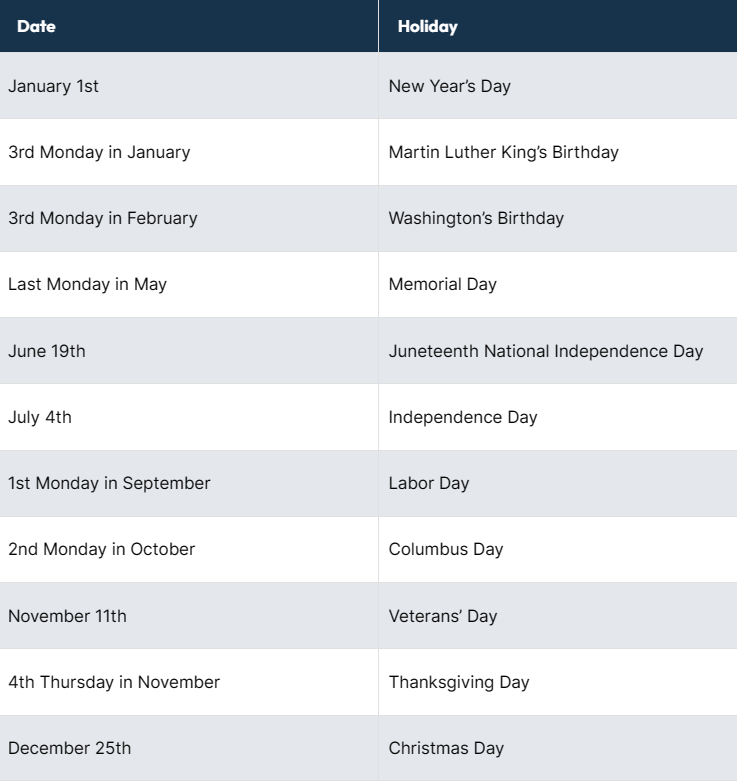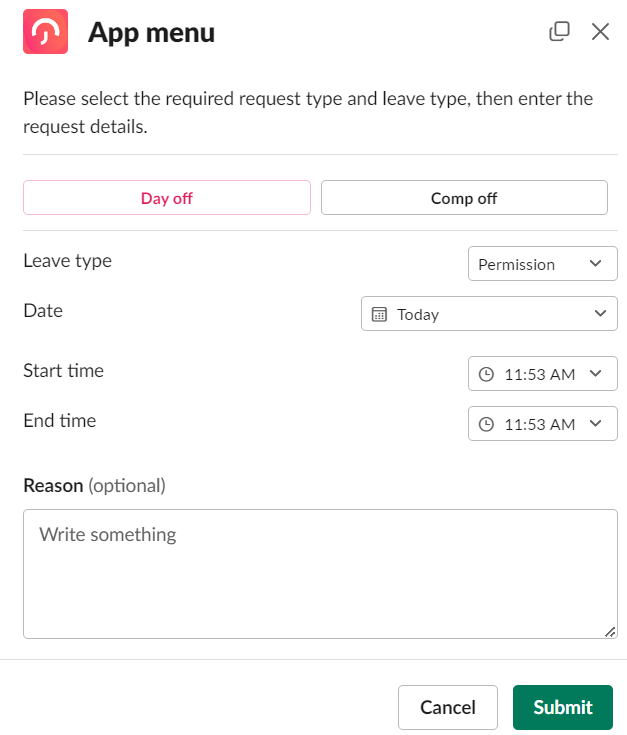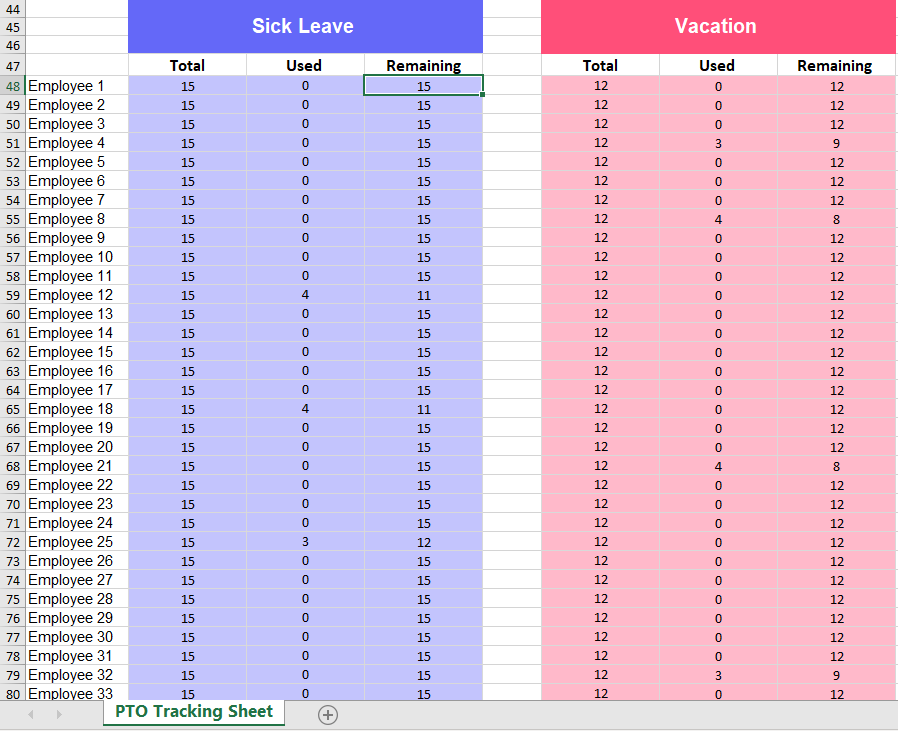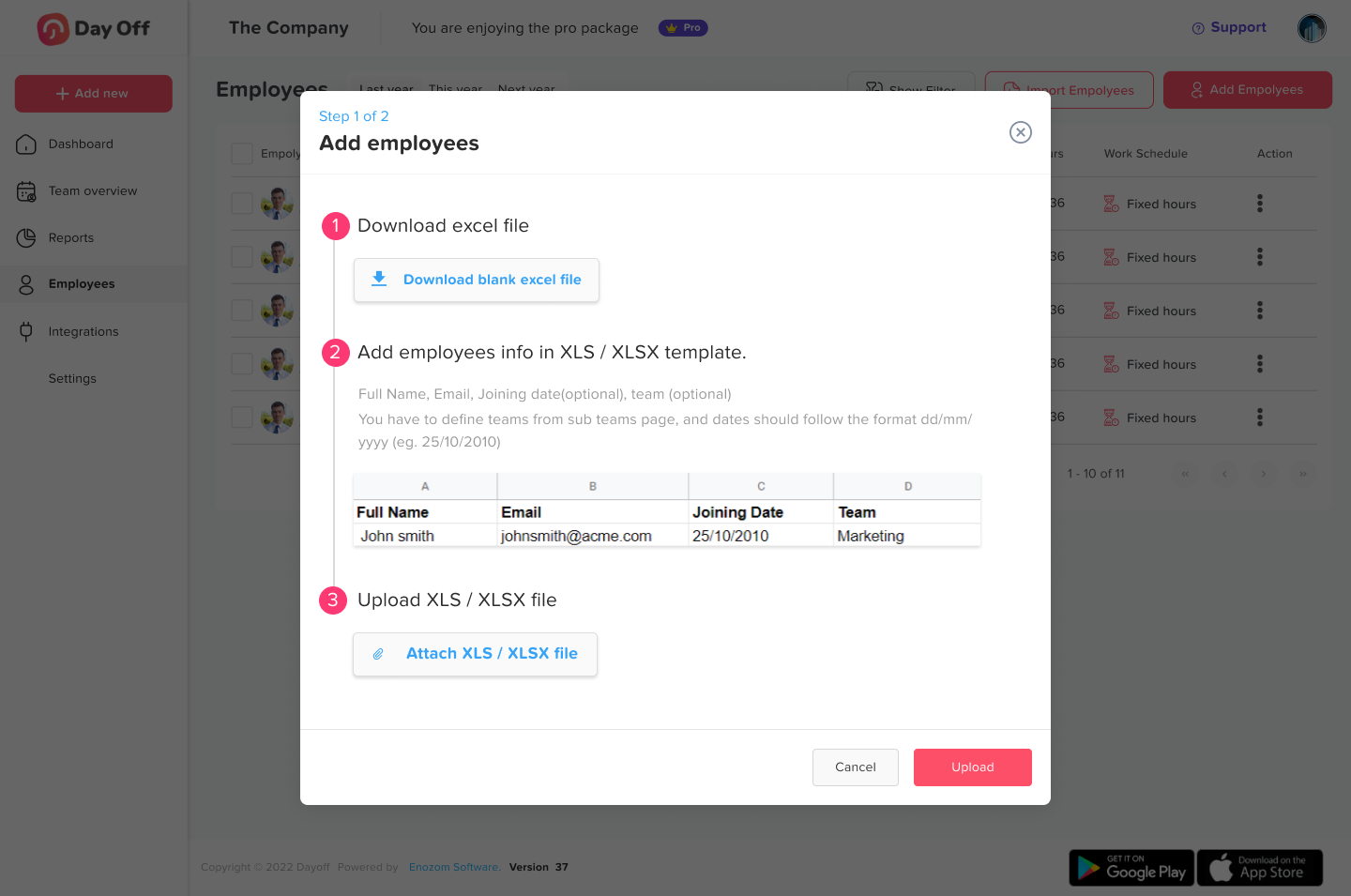Work life balance is increasingly prioritized, the role of personal time off in ensuring employee well being, satisfaction, and productivity has become a focal point for businesses worldwide. For small to medium sized businesses, crafting and implementing an effective PTO policy is not just a perk but a strategic tool in building a resilient and attractive workplace.
This comprehensive guide delves into the multifaceted benefits of personal time off, offers best practices for managing PTO, and provides actionable strategies for overcoming common PTO management challenges.
The Importance of Work Life Balance
The importance of work-life balance cannot be overstated, as it is crucial for maintaining both personal well-being and professional productivity. Achieving an optimal work-life balance involves managing work responsibilities and personal activities in a way that reduces stress, prevents burnout, and allows for sufficient rest and personal fulfillment.
Mental and Physical Health
Overwork and constant stress can lead to a myriad of health issues, including anxiety, depression, insomnia, heart disease, and a weakened immune system. A good work-life balance allows for adequate rest, recreation, and exercise, contributing to overall better physical and mental health. Engaging in hobbies and spending time with loved ones can renew one’s spirit and reduce the risk of burnout.
Enhanced Productivity
Contrary to the notion that longer hours mean more productivity, overworking can actually lead to decreased efficiency. When individuals have the time to recharge, they tend to be more focused, creative, and efficient in their work. A balanced schedule ensures that employees are not over-exhausted, allowing them to contribute their best efforts during work hours.
Improved Job Satisfaction
A workplace that promotes work-life balance is likely to have happier and more satisfied employees. Satisfaction in one’s job increases loyalty to the company, reduces turnover rates, and fosters a positive workplace culture. Employees feel valued and respected when their personal time is acknowledged and protected.
Stronger Relationships
Work life balance is essential for maintaining and nurturing personal relationships. Spending quality time with family and friends strengthens bonds and provides emotional support. Strong relationships contribute to a support system that can offer relief during stressful periods, enhancing overall well being.
Personal Growth and Development
Balancing work with personal life allows individuals to pursue interests and goals outside of their professional careers. Whether it’s learning a new skill, traveling, or engaging in volunteer work, these activities contribute to personal growth and a sense of accomplishment.
Achieving Work Life Balance
- Set Boundaries: Establish clear boundaries between work and personal time. This could mean setting specific work hours and making a conscious effort not to work beyond those hours.
- Prioritize Tasks: Learn to prioritize tasks based on urgency and importance. This helps in managing time effectively and reducing unnecessary stress.
- Take Regular Breaks: Short breaks throughout the day can boost productivity and creativity.
- Learn to Say No: It’s important to know your limits and decline additional responsibilities when you’re already stretched thin.
- Use Technology Wisely: While technology can enhance productivity, it’s also important to disconnect from work related communications during personal time.
The Importance Of Personal Time Off
the importance of personal time off for employees cannot be overstated. PTO not only allows employees to rest and recharge but also contributes significantly to their overall well being and job satisfaction. For small to medium sized businesses, developing an effective PTO policy is crucial for attracting and retaining talent, fostering a positive workplace culture, and maintaining high levels of productivity. This article explores the benefits of personal time off, outlines best practices for managing PTO, and suggests strategies for handling common challenges associated with time off management.
The Benefits Of Personal Time Off
Enhanced Physical and Mental Health: Continuous work without adequate breaks can lead to chronic stress, burnout, and health issues. PTO offers a necessary pause, allowing employees to unwind, pursue hobbies, and spend time with loved ones, leading to improved mental and physical health.
Boosted Productivity and Engagement: Contrary to the fear that time off might hamper productivity, studies show that employees often return from PTO with improved focus and energy. This rejuvenation can spark innovation, enhance problem-solving skills, and increase overall work engagement.
- Attrition Reduction and Talent Attraction: A flexible and generous PTO policy serves as a powerful tool in talent retention and attraction. By acknowledging the value of work-life balance, businesses can stand out as employers of choice, reducing the turnover rate and associated costs.
Best Practices For PTO Management
Clear Communication: Clearly outline your PTO policy in the employee handbook, including how time off is earned, the process for requesting time off, and any blackout dates or peak periods when time off may be limited.
Forward Planning for Absences: Proactive planning, including cross training employees and setting up temporary coverage systems, ensures that work continues seamlessly in someone’s absence. This approach minimizes disruption and maintains productivity.
Promoting a PTO Friendly Culture: Leaders should actively encourage employees to take their deserved time off. By setting an example and making use of their PTO, management can cultivate a culture where employees feel genuinely supported in taking time for themselves.
Implementing Efficient Tracking Systems: Leveraging technology to track PTO accrual and usage can streamline administration and foster transparency. Many HR software solutions offer features that allow employees to request time off and view their PTO balances, simplifying the process for all parties involved.
The #1 tracker for your team’s PTO, vacations and absences, Day Off will help you track your team’s leaves and absences in one place. In seconds you will set up your leave policies, approval workflow and enjoy a unique experience. The “Day Off” app concept revolves around providing users a platform to manage their personal, sick, and vacation days more effectively. features aimed at both individual employees and organizations.
- Employees can track their balances up to date information about their available time off.
- You can add unlimited numbers of employees.
- Supports various leave types (e.g., annual, sick, maternity/paternity leave) and Supports Days and Hours balance, you can add unlimited numbers of leave types and leave policies.
- You can Customize week starting day settings according to your company’s operational days.
- Setting up public holidays specific to your country or region, by importing holidays from Google.
- The app can integrate with ( Slack, Google Calendar, Outlook Calendar and Teams)
- Supports Accruals & Carry overs.
Handling Common Challenges
Balancing Needs During Peak Times: Clearly define and communicate blackout periods or times when PTO requests may be limited due to business needs. Offering alternative benefits, such as bonus pay or additional time off during off-peak periods, can mitigate potential dissatisfaction.
Dealing with Unscheduled Absences: While emergencies happen, a clear policy should outline how unscheduled absences are handled, including the requirement for notice and documentation. This clarity helps maintain fairness and reduces misuse of PTO.
Ensuring Equitable Access: To prevent any perception of unfairness, it’s important to apply the PTO policy consistently across the board. When exceptions are made, they should be based on clear, justifiable reasons to maintain trust and morale.
Handling PTO Rollover: Decide on a policy for PTO rollover and communicate it clearly. Whether you allow rollover and how much can impact employee decisions about taking time off and can influence year-end absence spikes.
The Importance Of Personal Time Off For Employers
The benefits of personal time off for employers are often underestimated, yet they play a critical role in fostering a healthy, productive, and sustainable workplace. While the immediate association with PTO might be the advantages it offers employees, the benefits for employers are equally significant. Here are detailed insights into how PTO can be advantageous for employers:
Attracts Top Talent
Competitive in Hiring: In a competitive job market, offering a generous PTO policy can give employers an edge. Prospective employees often consider work life balance as crucial as salary in their job decisions. A strong PTO policy can be a deciding factor for top candidates.
Enhances Employee Retention: Employees who feel their personal time is respected are more likely to remain loyal to an organization. Reduced turnover rates mean lower costs related to recruiting, hiring, and training new staff, directly benefiting the employer’s bottom line.
Productivity And Creativity
Renew Workforce: Employees returning from PTO are often more productive and energized. The break from routine work allows employees to return with renewed focus and vigor, which can lead to increased efficiency and output.
Encourages Creative Insights: Time away from work can spark creativity, offering employees new perspectives or innovative solutions to problems. This fresh outlook can lead to breakthrough ideas and improvements in processes or products.
Reduces Burnout and Health Related Costs

Prevents Employee Burnout: Regular intervals of PTO help prevent burnout by allowing employees time to decompress and relieve stress. A workforce that maintains a healthy work life balance is less prone to burnout, resulting in more consistent productivity.
Lowers Healthcare Costs: Stress and overwork can contribute to various health issues, leading to increased absences and healthcare costs. By encouraging PTO, employers can see a reduction in these costs as employees have the opportunity to rest and recover.
Company Culture and Employee Morale
Fosters a Positive Work Environment: A culture that values employee well being and work life balance tends to attract like minded individuals, creating a cohesive and motivated team. A positive work environment is key to employee satisfaction and productivity.
Strengthens Employee Loyalty and Morale: When employees feel that their personal time is valued, they are more likely to have a positive attitude towards their employer, fostering loyalty and a willingness to go above and beyond in their roles.
Advantages
Enhances Planning and Efficiency: Implementing a clear PTO policy requires employers to plan for employee absences, which can lead to more efficient work processes and better allocation of resources. This planning helps ensure that productivity remains high, even when key employees are away.
Supports Risk Management: Encouraging employees to take PTO can also serve as a form of risk management. For roles involving financial handling or sensitive information, having employees take regular breaks can reduce the risk of fraud or misconduct, as it allows for checks and balances during their absence.
Frequently Asked Questions (FAQ) About Personal Time Off (PTO) and Work-Life Balance
What is Personal Time Off (PTO)?
Personal Time Off (PTO) refers to the paid leave that employees can use for various personal reasons such as vacation, illness, mental health days, family care, or simply taking a break to recharge. Unlike traditional leave structures that separate sick days, vacation days, and personal days, a PTO system often consolidates them into one flexible pool of time employees can use as they see fit.
Why is PTO important for both employees and employers?
PTO is essential for maintaining employee well-being, preventing burnout, and improving overall productivity. For employees, it provides necessary rest and balance. For employers, it helps reduce turnover, boost engagement, and foster a healthier and more motivated workforce. In short, it’s a win-win: happier employees and stronger organizational performance.
How does PTO contribute to employee mental health and productivity?
Taking time off allows employees to step away from work-related pressures, rest, and engage in fulfilling personal activities. This downtime rejuvenates mental and physical energy, leading to improved focus, creativity, and problem-solving abilities upon returning to work. Studies consistently show that employees who regularly take PTO are more productive and engaged than those who do not.
What are the different types of PTO that companies can offer?
Companies can customize PTO to meet their workforce’s diverse needs. Common types include:
Annual or vacation leave for rest, travel, or leisure
Sick leave for illness or recovery
Personal days for family or personal matters
Maternity or paternity leave for new parents
Bereavement leave for loss of a loved one
Mental health days for emotional recovery
Public holidays recognized by the company
How much PTO should a small or medium-sized business offer?
There is no universal standard, but most small and medium-sized businesses (SMBs) offer between 10 to 20 days of PTO annually, depending on company size, industry, and local labor laws. Some organizations also allow PTO to increase with tenure — rewarding long-term employees with additional days off.
What is the difference between a PTO policy and traditional leave policies?
Traditional leave systems separate time off into specific categories like vacation days, sick leave, and personal days. A PTO policy, on the other hand, combines all these into a single pool of days that employees can use for any purpose. This approach offers greater flexibility and autonomy, which many modern employees value highly.
How should employers handle unused PTO or rollover requests?
Employers can adopt different approaches based on their operational needs:
Use-it-or-lose-it policy where unused days expire annually
Limited rollover allowing a set number of days to carry over
Unlimited PTO where employees manage their time responsibly
Whatever approach is chosen, clarity and consistent communication are essential.
What are the legal considerations when creating a PTO policy?
Legal requirements vary by country and sometimes by state or province. Employers should ensure their policy complies with:
Minimum paid leave requirements under labor laws
Rules for PTO payout upon termination or resignation
Regulations surrounding sick or family leave
Consulting an HR professional or employment attorney helps ensure compliance.
How can small businesses manage PTO efficiently without disrupting operations?
Small businesses can manage PTO effectively by cross-training employees, planning ahead for absences, setting blackout periods during high-demand times, and using PTO tracking tools like Day Off to automate leave management and approvals.
What is the “Day Off” app and how does it help with PTO management?
Day Off is a user-friendly leave management platform that helps teams track absences, vacations, and other leave types in one centralized place. It supports multiple leave types, integrates with Slack, Google Calendar, and Outlook, and automates accruals and carryovers. For small and medium-sized businesses, it simplifies leave tracking and enhances transparency.
How can managers encourage employees to take their PTO?
Managers can lead by example by taking time off themselves, regularly reminding team members to schedule their breaks, respecting time off boundaries, and ensuring workloads are manageable before and after vacations. Promoting a culture that values rest creates a healthier, more sustainable team dynamic.
What happens if employees don’t take their PTO?
Employees who rarely take time off are at greater risk of burnout, fatigue, and declining job satisfaction. Over time, this can lead to increased absenteeism and reduced productivity. Encouraging regular PTO use supports mental health and long-term performance.
How can PTO policies help attract and retain top talent?
A transparent and flexible PTO policy signals that the company values work-life balance and employee well-being. This can be a deciding factor for candidates when choosing between employers, and it fosters greater loyalty and retention among existing staff.
Should PTO be tracked manually or through software?
Manual tracking might work for very small teams but quickly becomes inefficient as a company grows. PTO management software automates accrual, balances, approvals, and recordkeeping—reducing administrative workload and ensuring transparency.
How can companies maintain fairness in PTO approvals?
Fairness can be ensured by following clear, documented rules for how requests are prioritized, typically on a first-come, first-served basis, and applying the policy consistently across all employees. Transparency helps prevent resentment and maintains team trust.
What are “blackout periods,” and how should they be managed?
Blackout periods are specific times when taking time off is restricted due to business demands. These should be clearly communicated well in advance. Employers can balance fairness by offering extra time off or incentives during slower months.
How does PTO affect company culture?
A supportive PTO policy promotes a culture of trust, respect, and balance. It signals that the company values its employees as whole individuals, not just workers. This fosters loyalty, morale, and collaboration across the organization.
What is the link between PTO and company profitability?
While PTO represents paid non-working time, it often leads to higher long-term profitability by increasing engagement, reducing turnover, and preventing burnout. Rested employees perform more efficiently, innovate more often, and stay longer with the company.
How can remote or hybrid teams manage PTO effectively?
Remote and hybrid teams can manage PTO effectively through digital tools that track absences, sync with shared calendars, and maintain visibility across time zones. Clear communication and workload planning are key to ensuring smooth operations while respecting time off.
How often should a PTO policy be reviewed or updated?
PTO policies should be reviewed annually or whenever there are changes in labor laws or organizational needs. Regular reviews ensure fairness, compliance, and alignment with evolving employee expectations and company culture.
Can PTO policies include unpaid leave options?
Yes. Many companies include unpaid leave provisions for extended personal situations or educational pursuits. Offering flexibility for special circumstances supports employee loyalty and helps maintain a positive work environment.
What role does PTO play in preventing workplace burnout?
Regularly taking PTO allows employees to recover from stress, rest their minds and bodies, and return with renewed motivation. It’s one of the most effective ways to prevent burnout, reduce errors, and sustain long-term performance.
How can technology improve the PTO experience for employees and HR teams?
Technology simplifies leave management by automating accruals, approvals, and tracking. It also increases visibility for both employees and managers. Platforms like Day Off streamline the process, integrate with calendars, and enhance overall communication and efficiency.
What should employers do if PTO is being misused?
Employers should first assess whether the issue stems from unclear policies or individual misuse. Address concerns privately, document issues, and reinforce expectations while maintaining fairness. Clear communication and consistent enforcement are key.
How can small businesses balance generosity and practicality in PTO policies?
Small businesses can balance flexibility and operational needs by offering incremental accrual, limited rollover, and options for unpaid leave when necessary. Transparent communication ensures employees feel valued while maintaining business continuity.
Conclusion
Personal time off is far more than just a workplace benefit, it’s a cornerstone of a healthy, resilient, and forward-thinking organization. When employees are encouraged to rest, recharge, and nurture their personal lives, they return to work with renewed energy, creativity, and commitment.
By prioritizing mental and physical well-being, promoting genuine work-life balance, and supporting personal growth, businesses can cultivate a culture where people feel valued and motivated. In turn, this leads to higher engagement, stronger performance, and greater long-term retention.
A well-crafted PTO policy is not only an investment in employee satisfaction, it’s a strategic foundation for building a productive, sustainable, and human-centered workplace where both individuals and organizations can truly thrive.
















